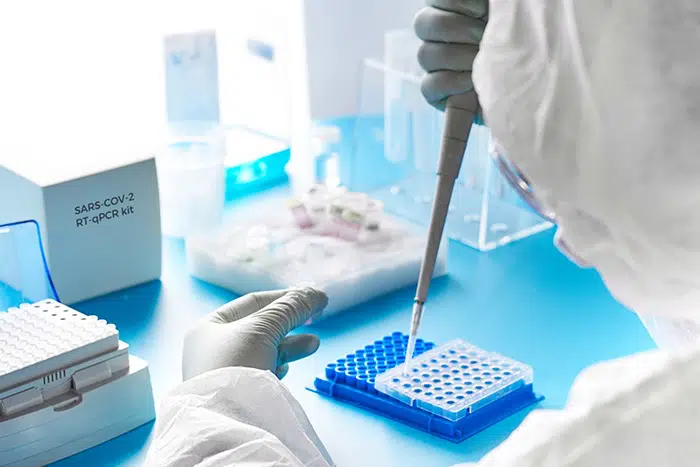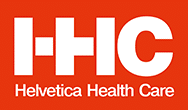COVID-19 Treatment and Recovery

COVID-19 is known as a new viral infection. One of the vital biological characteristics of SARS-CoV-2 and various other viruses is the ubiquity of spike proteins that enable viruses to penetrate host cells and cause infection. The most significant medical concern is a secondary bacterial strain that manifests during or after a viral infection(s), leading to adverse outcomes and sometimes fatal clinical complications.
Research and development of clinical trials focus mainly on the primary pathogen and any neglected secondary infections. Several individuals are contracting COVID-19 worldwide, resulting in an unusual number of intensive care units (ICU). To treat mild or moderate COVID-19, scientists are continually working on new antiviral medications. There already are drug and non-drug interventions that can assist individuals in coping with COVID-19 symptoms.
Effects of COVID-19
On the Immune System: It causes a massive release of cytokines known as the cytokine storm – cell hormones that destroy their tissues, cause oedema. It reduces protective functions due to a sudden decline in lymphocytes cells that usually fight the virus.
On the Respiratory System: Severe acute respiratory syndrome (SARS) is a viral respiratory illness caused by a coronavirus called SARS-associated coronavirus SARS-CoV. It generates pneumonia due to the destruction of lung tissue, leading to respiratory failure and acute distress syndrome ARDS.
On an Organism as a Whole: It increases inflammatory processes, exacerbates chronic disorders, which are hazardous for people with pre-existing comorbidities such as cardiovascular, weakened liver function, respiratory infections and metabolism issues
A recent study on the Prevalence of Comorbidities in Patients and Mortality Cases Affected by SARS-CoV2 found that 42% of patients with Covid-19 had comorbidities. Furthermore, 61% of those with Covid-19 admitted to the Intensive Care Unit had comorbidities, and 77% of those who died had comorbidities. Hypertension was the most prevalent comorbidity (affecting 32% of patients). Other common comorbidities included diabetes (22%), heart disease (13%), and COPD (8%).
Particularly at the early stage or for non-intubated patients, experts recommend close monitoring of the symptoms of secondary infection, especially in critically ill patients who have been admitted to ICU for more than 48 hrs.
Moreover, considering the long-term impact of antimicrobial resistance development due to the unnecessary usage of antimicrobial agents, the most common bacterial and fungal infections could complicate COVID-19, knowing their expected antibiogram and strictly monitoring the development rate of resistant bacterial strains.
Here is a glimpse at some of the available COVID-19 treatments and how to get more information about them. It is essential to talk to your health care provider about feasible treatment options if you have contracted COVID-19. Your health care provider will identify the best option for you based on your symptoms, risks, and health history. The symptoms of Covid-19 usually are some mix of fever or chills, cough, shortness of breath, headache, lethargy, sore throat, congestion or runny nose, muscle or body aches, diarrhoea, or nausea.
It is important to note that many people, often described as asymptomatic, often have hardly any symptoms at all and may be unaware that they have been infected. This is because their immune system has been strong enough to fight the infection off at an early stage. This is why it is important to maintain a healthy immune system.
Monoclonal Antibody Treatment
Clinical researchers are fledging new therapies to treat mild to moderate COVID-19, including monoclonal antibodies(MAbs). To combat the invading pathogens such as the virus, specific molecules are produced in a lab to mimic those usually made by a body’s immune system. Monoclonal antibody drugs identify and neutralise the SARS-CoV-2 virus that prompts COVID-19.
The FDA has granted emergency use authorisation (EUA) to several monoclonal antibody medications for mild or moderate COVID-19. The FDA has determined that the known or potential benefits outweigh the known or possible risks based on carefully evaluating the available scientific evidence.
Monoclonal antibody medications are commonly administered by intravenous IV infusion at an outpatient infusion centre. The whole treatment process can take about two to three hours, with the IV delivery of the drug, which can take about an hour. A strain of monoclonal antibodies supports the immune system, reducing the uncertainty that someone will need to be hospitalised and lessening the odds of dying.
Who Is Eligible to Receive Monoclonal Antibody Treatment
According to clinical studies, treating mild or moderate COVID-19 in adults and children aged 12 years and over and weighing at least 40 kg who have tested positive for COVID-19 within the last ten days and are at high risk for advancing to severe COVID-19 state —the FDA has sanctioned the use of several monoclonal antibody therapies, hospitalisation, or both.
Individuals at heightened risk include 65 years and older and with underlying medical conditions like lung disease, cancer, chronic kidney disease, liver disease, lung disease, dementia, or other neurological disorders. In addition, patients may also need a referral from their healthcare provider for individuals meeting these criteria to receive monoclonal antibody treatment.
Other Treatments for Mild or Moderate COVID-19
In extreme circumstances, doctors may treat patients who have mild or moderate COVID-19 with the following:
1. Corticosteroids
Dexamethasone is an effective immune modulator; as it reduces inflammation in the body by controlling the immune response. To treat a mild or moderate COVID-19 case, several pieces of evidence suggests that some people who require supplemental oxygen from a mask or an oxygen cannula may profit from receiving a steroid such as dexamethasone. Pulmonary fibrosis, pneumonia, cystic fibrosis, and sleep apnea are some conditions requiring supplemental oxygen. A short course of a comparatively low dose of corticosteroids helps patients heal faster and have a better outcome.
2. Home Oxygen
It would be very uncommon for physicians to start a patient on oxygen from a doctor’s office or ER and then send them home during pre-COVID-19 times. But now, because hospital infrastructure is so incredibly overladen and impoverished, there has been an uptick in the initiation of outpatient oxygen. Most people with COVID-19 have been prescribed home oxygen and must regularly contact their health care provider.
Recovery After Severe Illness with COVID-19
A small percentage of people who have the new coronavirus need to stay in the hospital to get help breathing. This aspect mainly depends on contingencies like your age and your overall health. This might last two weeks or longer.
On the other hand, people with severe COVID-19 get a complexity called acute respiratory distress syndrome (ARDS), maligning their lungs and making breathing difficult. And if an individual is critically ill, they might need hospitalisation in an intensive care unit (ICU). And if patients who spend time in the ICU lose weight and energy. Your health care provider can work with you to treat Covid-19 or manage these symptoms, including exercises to boost your power.
Check our previous blog on- HOW TO STRENGTHEN YOUR IMMUNE SYSTEM AGAINST COVID-19.
Visit Helvetica Health Care to buy Covid-19 recovery and treatment-related products.
